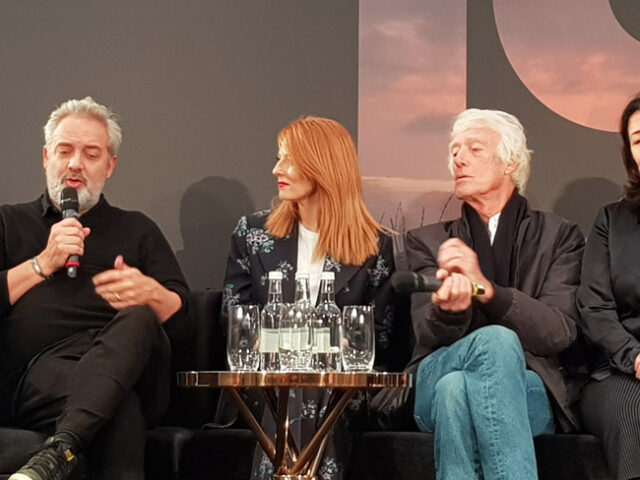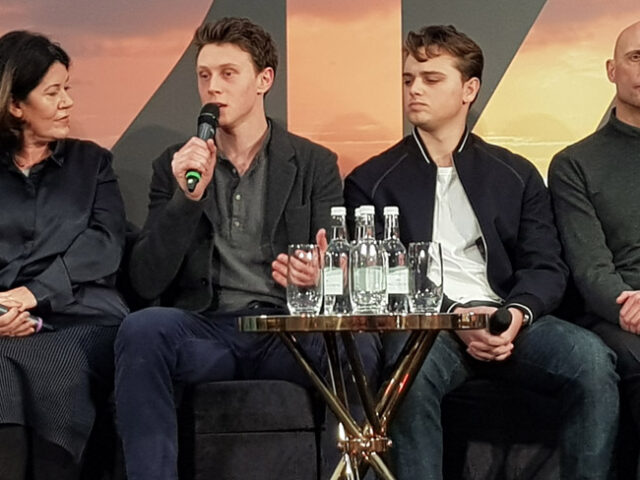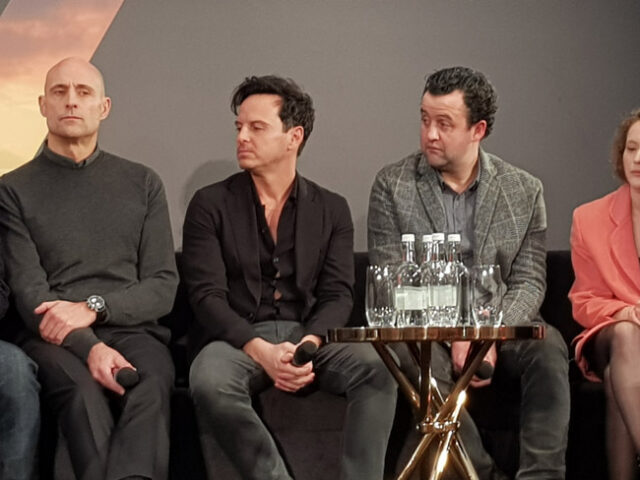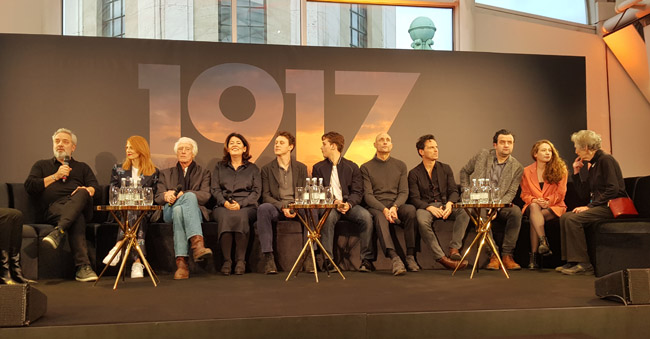War films are ten a penny but every so often one comes along that will simply blow you away, not for its grandeur but for its ability to immerse the audience within the action telling a more human side to fateful men’s story. Sam Mendes awards contender, 1917 is just that film with its breathtaking cinematography, including the illusion of being filmed in one shot, and its poignant and brilliant performance from its leading cast in George MacKay and Dean-Charles Chapman.
Mendes film tells the story of two young British soldiers during the 1st World War. At the height of the war, Lance Corporal Schofield (George MacKay) and Lance Corporal Blake (Dean-Charles Chapman) are given a seemingly impossible task. In a race against time, they must cross enemy territory to deliver a message that could potentially save 1,600 of their fellow soldiers—Blake’s own brother among them.
Where War films are quite prominent, those set during the 1st World war aren’t, mostly for the reason of its set location. However, thanks to Mendes Grandfather and a trip to the Imperial War Museum (in which the film’s London Press Conference took place) Mendes story suddenly sprung to life.

“I had this idea, the story my grandfather told me was the story about him carrying a message. The problem with the 1st World War generally, is that it’s a war in which 100’s of thousands of people lost their lives over time and stretch of land” said Mendes. “So carrying a message didn’t seem to be a valid option. It was only when I started researching it, I came here (Imperial War Museum) amongst that whole period and I find this time in 1917, a very specific moment when the German’s retreated the Hindenburg line and suddenly this line they were fighting over was abandoned and the German’s destroyed most of what was there, left nothing of any lasting value. There seemed to be a story possible to tell, this epic journey, that was the moment I thought I can write the film. At least 90% of the first-person accounts of the war are accounts of things like the Somme. One of the reasons the 1st World War is not as represented in movies as the 2nd World War is the very nature that the war was quite static. When I found out there was a journey they could take, that was the moment I started writing with some kind of enthusiasm”.
One of the most breathtaking feats Mendes incorporates into the film is the illusion of the single-shot for 90% of the movie, which is not an easy task. Who better to pull off this virtually impossible feat than famed cinematography Roger Deakins who is best known for the beautiful visuals in films such as Blade Runner 2049, Skyfall and The Shawshank Redemption to name just a few. Even with his study hand and years of experience behind a camera, the shoot filled him with anxiety.
“He [Mendes] sent the script and on the cover page, it said the vision was a single shot, my wife and I looked at each other and said there must be a typo mistake on it. I don’t think it was until almost a few days before we actually started shooting, we kind of figured everything out, and then we decided it was makeable. We did a lot of rehearsals and a lot of testing” said Deakins
“I’ve never had as much anxiety as I did on some of the shots on this, but also the thrill. After some of the shots, which were like 7 or 8 minutes and the complicated moves and everybody has got to be on the ball. At the end everyone would look at each and high five, it was a real high”.

When it comes to building a great British cast, Mendes would never have any problem in attracting a big name or two, here we have the likes of Mark Strong, Andrew Scott, Benedict Cumberbatch, Colin Firth and Daniel Mays, but the central performances lay on the young shoulders of the brilliant George MacKay and Dean-Charles Chapman who completely nail the emotion and intensity of their characters from the very first word.
Set over a short period of time we know virtually nothing about these boys’ backgrounds or what keeps them motivated while surrounded by the horrific sight and stench of fear and death. The lad’s characters and history slowly unravel as they make their way on their journey across the wastelands, both MacKay and Chapman, made sure they did their homework to honour those who fought so valiantly during this war.
“This story is so present and the film is so present but the crux of Schofield’s character is where he is from and what he is missing. I think that’s what the films about, how these extreme situations, in any case, teach you about what you go back to. For me, it was essential to know what those things were and that was through a mixture of research, I came here (Imperial War Museum), reading first-person accounts and also just building it myself” said MacKay.
“In the costume department back in Shepperton Studios, there was this big wall of photographs. On the wall was this picture of 3 soldiers, all 3 completely different types of characters. There was one, in particular, that was just so relaxed, leaning up against the truck, all his jacket was undone, his shirt was half hanging off, and he had 2 rings, one on the middle finger one on the little finger. That relaxed mannerism he had in that one photograph, the other two were like soldiers, I just thought I like that. Just little things like that sort of added to the character, without saying anything it speaks loud” continued Chapman.

Even with such an amazing ensemble cast, because of the nature of the shoot where each individual where soldiers that crossed the path of the 2 main characters on their mission, not all were required on set at the same time, which for Mark Strong was just part of the job and you simply just had to get on with it.
“Sam first said to me that Captain Smith was one of the few characters that are actually kind to the boys. We’ve worked together in the past, so he knows I’m very kind, I think there was just an element he wanted for that character that was at that moment in the film quite a pivotal moment. Coming into it is quite daunting because you only have a couple of days. The way it was shot means unlike traditional methods you’re literally just playing your sequence in one, and once it was done it was over. There weren’t a lot of days involved, it was just a quick in and out. You had to be well up to speed, you had to do that difficult thing that all actors find when you are coming into a shoot halfway through or third of the way through, you just have to get on the same page as everyone else” said Strong.
It may have been easy for Strong to get his shut done and dusted without any hiccups but others weren’t so lucky. That honour landed on the head of Fleabag’s own sexy priest, Mr Andrew Scott who had a little trouble with a lighter.
“You have to work alongside the camera team and the extras, the great challenge of it you know you don’t want to mess it up [laughs], you don’t want to be that guy. The great challenge of it is if you are doing a scene that’s 6 minutes long and you doing stuff that everybody thinks is OK and you make a mistake in minute 4 or 5 you can’t just say OK we can do that bit again, you have to start right from the beginning. It’s very much like live theatre” said Scott.
Mendes said; “I have to say, Andrew’s only scene made more mistakes than…
“Never smoke in anything, on stage or in film where you need to use a cigarette lighter” Scott continued.
There is no doubt as to why the buzz around this film is so positive; positive enough to kick start the awards discussion. From the human angle of the story to the exquisite sights of the cinematography and the actor’s ability to make you feel every last empathy for their situation, this is one film that lingers on the mind and brazenly on the lips.
1917 hits UK cinemas January 10th, 2020














